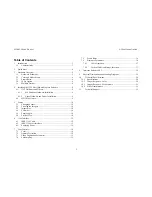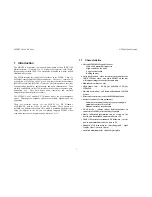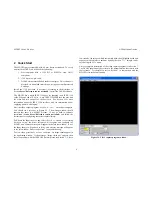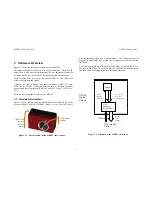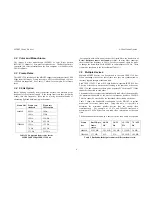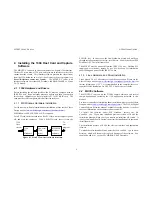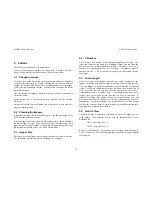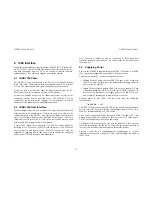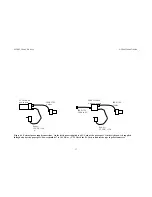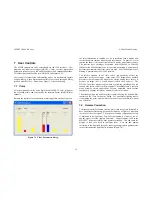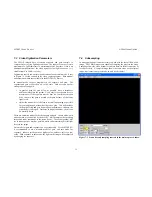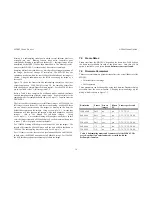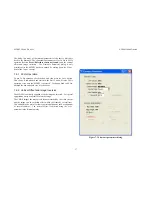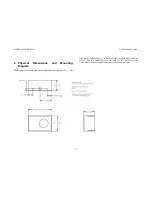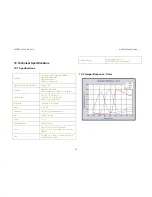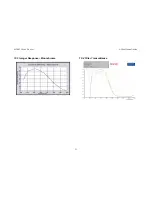
MDCS2
U
SER
’
S
M
ANUAL
©
2004
V
IDERE
D
ESIGN
14
7 User
Controls
The CMOS imagers are fully controllable via the 1394 interface. User
programs may input color images (MDCS2-C only), set video digitization
parameters (exposure, gain, red and blue balance), and subsampling modes.
All of these parameters can be set with the DCAM capture API. .
User controls for frame size and sampling modes are on the main capture
window dialog. Video digitization controls are accessed through a dialog
invoked with the
Video…
menu item. Figure 7-1 shows the dialog.
7.1 Color
Color information from the stereo digital head (MDCS2-C only) is input as
raw colorized pixels, and converted by the interface library into RGB color
channels.
Because the typical color camera uses a colorizing filter on top of its pixels,
the color information is sampled at a lower resolution than a similar non-
colorized camera samples monochrome information. In general, a color
camera has about ¼ the spatial resolution of a similar monochrome camera.
The cameras have on-imager decimation from 1280x960 to 640x480.
Whenever the 640x480 frame size is requested, decimation is automatically
performed on-camera, and all the pixels are used. For 320x240 frame sizes,
binning is performed by the DCAM software.
The relative amounts of the three colors, red/green/blue, affects the
appearance of the color image. Many color CCD imagers have attached
processors that automatically balance the offsets among these colors, to
produce an image that is overall neutral (called
white balance
). The
MDCS2-C provides manual color balance by allowing variable gain on the
red and blue pixels, relative to the green pixels. Manual balance is useful in
many machine vision applications, because automatic white balance
continuously changes the relative amount of color in the image.
The manual gain on red and blue pixels is adjusted using the
Red
and
Blue
controls on the
Video Parameters
dialog. For a particular lighting source,
try adjusting the gains until a white area in the scene looks white, without
any color bias.
7.2 Gamma
Correction
To display properly for human viewing, most video images are formatted to
have a nonlinear relationship between the intensity of light at a pixel and
the value of the video signal. The nonlinear function compensates for loss
of definition in low light areas. Typically the function is x
γ
, where
γ
is 0.45,
and the signal is called “gamma corrected.” Digital cameras, such as the
MDCS2/C, do not necessarily have gamma correction. This can cause the
display to look very dark in low-light areas. You can add gamma
correction to the displayed image by choosing an appropriate gamma value
in the slider under the right display window (Figure 7-2).
Figure 7-1 Video Parameters dialog.


